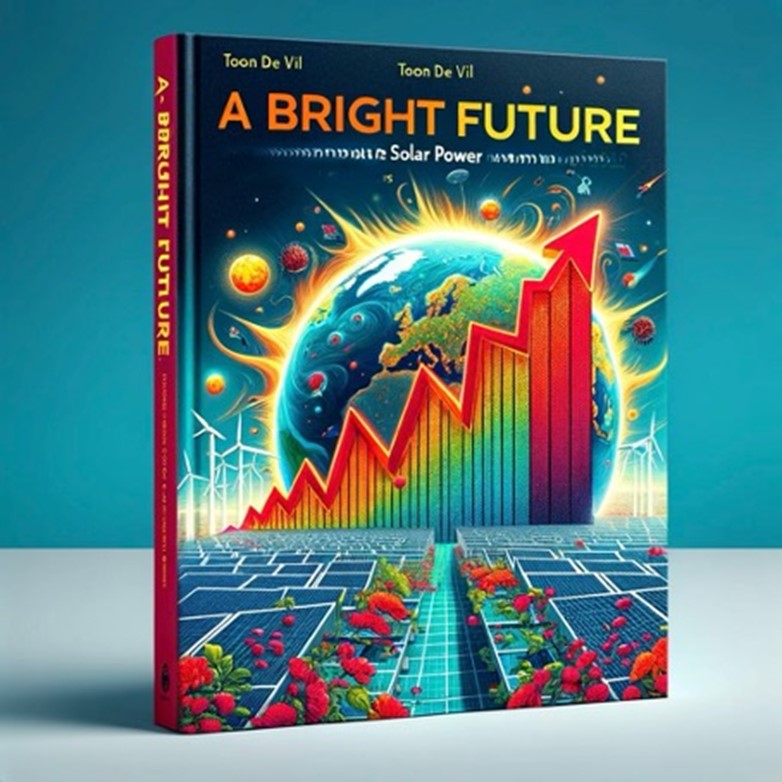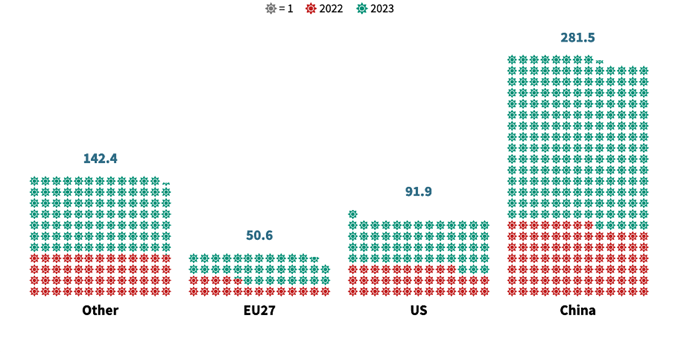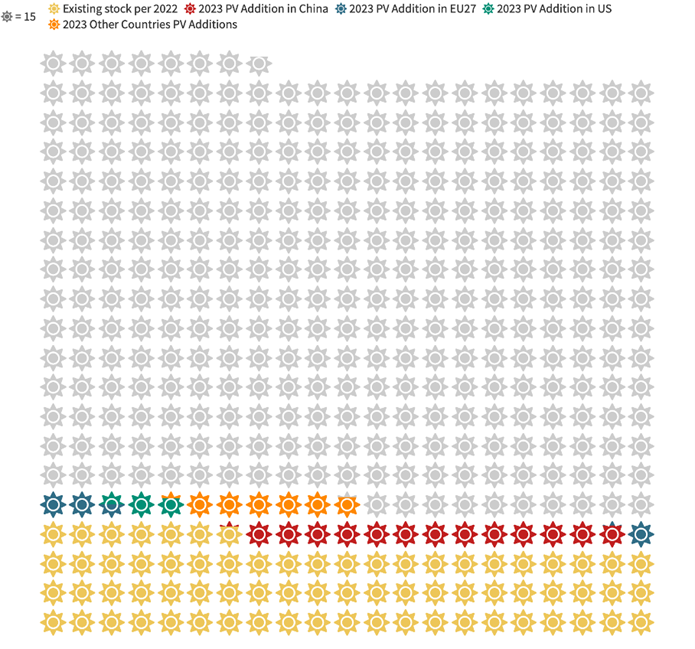Toon has a Master’s Degree in Civil Engineering (major in Energy) from the KU Leuven. He completed a 6 month internship as Derivates Analist. He work as a Junior Climate Consultant for Econopolis Climate and works on advisory projects related to climate & energy. Toon is also founder of Stroomloop, a unique trailrunning experience.
A Bright Future: Insights into the Solar Power Landscape of 2023

The year 2023 has wrapped up, offering a vital opportunity to analyze the significant trends that have shaped the solar power industry. Last week, the International Energy Agency (IEA) has provided preliminary data, giving a glimpse into the evolving solar landscape. Although final numbers are pending, the current data unveils intriguing insights.
Two key observations already stand out from the 2023 solar power data, indicating a promising direction for renewable energy, particularly in solar power advancements (a focus on wind power will hopefully follow in a future post).
Firstly, the pace at which China has embraced solar power is nothing short of remarkable. In 2023 alone, China's solar power installations matched the total global installations of the previous year. This monumental achievement is visually represented in Figure 1, which illustrates the annual additions of Solar Capacity in the past two years. The graph strikingly demonstrates China's commitment and rapid advancement in the realm of solar energy.
Capacity additions of Solar PV Installations in the past two years (GW)


Second, as depicted in Figure 2, the broader implications of this surge in solar capacity are significant. With the current rate of progress, reaching the ambitious 'Net Zero Emissions' (NZE) goal by 2030 – achieving 6100 GW of installed solar capacity – seems increasingly within reach. This is indeed encouraging news for the new year, although facing the upcoming challenges with a realistic perspective is essential.
2023 Additions to the global PV capacity stock compared to the 2030 NZE Target (GW)

In conclusion, these findings challenge the narrative that 'China is primarily responsible for emissions, and hence, transition efforts should be minimized.' Instead, the data underscores China's crucial role in the global transition to renewable energy. While acknowledging and valuing China's contribution is imperative for a globally unified response to climate change, it is equally important to maintain a stance of strategic criticism. Collaborating with China, while critically evaluating and addressing broader geopolitical and environmental concerns, will be key in navigating the path towards a sustainable and cleaner energy future.
